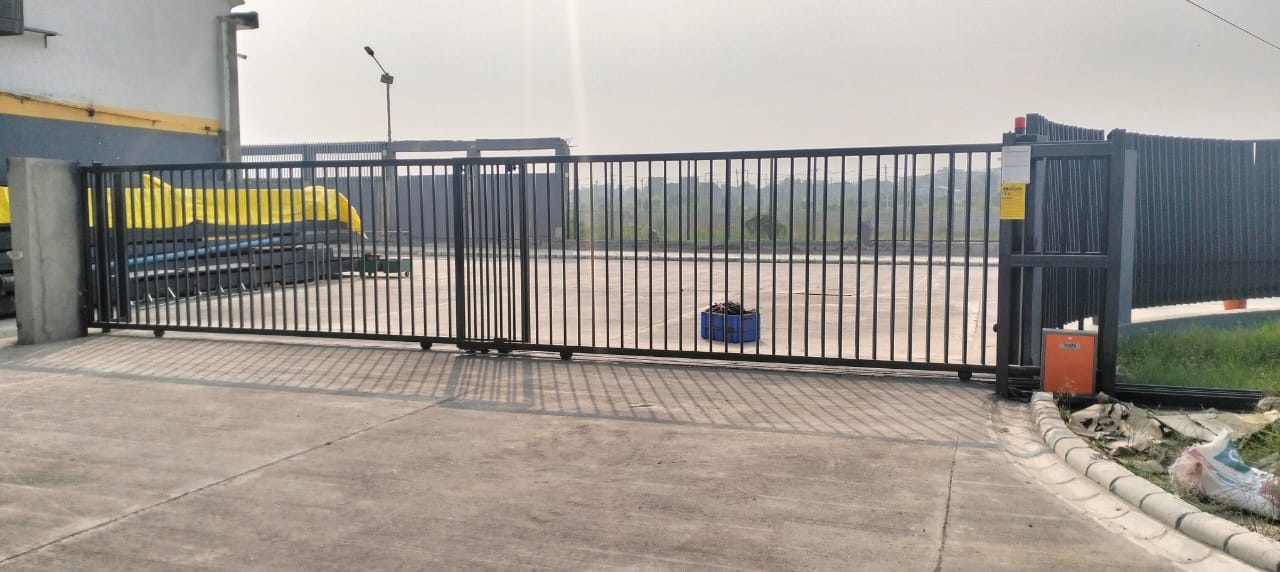Sliding gates are widely used for residential, commercial, and industrial properties. One of the most common types of door systems, they are efficient, durable, and easy to use and can effectively increase the security of a business while taking up minimum space. But how do sliding gates actually work? Knowing how these tools work will help you be a smart user regarding installation, maintenance, and upgrades.
In this article, we will help you understand how sliding gates work. We’ll explain the parts of them, how they work, and their benefits so you can learn the basics.
Components of Sliding Gates
To a passing eye, a sliding gate might seem pretty simple; but there are a number of key components that contribute to a sliding gates smooth operation.
Key parts include:
- Gate Frame: The frame of the gate itself, usually constructed using steel, aluminum or similar metal. It is what holds the entire structure together.
- Rollers or Wheels: These enable the gate to slide horizontally on an embedded track.
- Track system: This directs the gate as it moves open and closed. Tracks are typically either laid on the floor or overhead.
- Motor (in Automated Systems): Automated sliding gates are operated by an electric motor. The motor is connected to the mechanism that operates the gate.
- Rack and Pinion Actuator: In electric sliding gates, a toothed rack is attached to the gate, and the motor drives a pinion that moves the gate.
- Control Panels and Sensors: The control panel is the brain of an automated gate system, and sensors ensure safe operation by detecting obstructions.
- Remote Control/Keypad — Offers easy access management for automated gates.
How Sliding Gates Work
The sliding gate working principle is simple and effective. Here’s a precise breakdown of how it works:
Triggering the Gate
With manual gates, you simply unlock the latch and push or pull the gate along the track.
For automated gates, activating the remote control, keypad, or intercom system sends a signal to the control panel that overrides the safety mechanisms and commands the motor to move the gate.
Gate Movement
The pinion gear is driven by the motor, which rotates across the drive rack. This action moves the gate sideways along the track.
Rollers or wheels for easy opening and closing;
Safety Mechanism
Many modern sliding gates are fitted with sensors that would detect an object. Should an object block the path of this gate, the system stops or reverses to avoid accidents.
Locking System
When the gate is fully opened or closed, the control panel locks the gate in that position.
Power Backup (Optional)
In order to maintain higher reliability, some automated gates even come with backup batteries, which serve as their power source in case the main power supply fails.
Types of Sliding Gates
Sliding gates are available in different styles to fulfill various requirements:
- Conventional Sliding Gates: These gates slide on a track system if one side of the gate posts is blocked, which makes them best suited for homes and small businesses.
- Cantilever Sliding Gates— Installed without ground tracks, these gates are ideal for sloping or uneven ground as well as any environment with obstacles.
- Telescopic Sliding Gates: Ideal for smaller properties, telescopic gates have panels that slide open one after the other, stacking up in front of each other.
Benefits of Sliding Gates
Here are a few advantages to investing in sliding gates:
- Space Efficiency: Sliding gates don’t swing open and closed like their counterparts, making them appropriate for small spaces.
- Improved Security: Besides, they offer better protection due to their sturdy construction and reliable locking mechanisms.
- Convenience and Safety Automation Options: Automated sliding gates offer improved convenience and safety.
- Durability: Sliding gates are constructed with heavy-duty materials to endure extreme climates and frequent use.
- Aesthetic: Sliding gates are available in a range of designs and materials, adding to the curb appeal of your property.
Keep Your Sliding Gate Working Smoothly With These Maintenance Tips
By following these maintenance tips, you can keep your sliding gate working effectively for years to come.
- Regularly Clean the Tracks: Dirt, debris, and leaves can build up in the track and block movement.
- Lubricate Moving Parts: Reduce friction and wear on rollers, gears, and hinges by lubricating moving parts.
- Clear the Path: Keep the area in front of the gate clear of debris.
- Test safety features: Do sensors and auto-reverse work?
These include Periodic Motor Servicing: Automated gates that have motors need periodic servicing to avoid getting broken down.
Conclusion
For residential and commercial properties, sliding gates seamlessly blend functionality, security, and convenience, making them the ideal choice. So really, all you need to do is learn how they operate and keep the vital bits healthy to enjoy years of performance and reliability.
If you’re in the market for a sliding gate or need to improve your existing one, invest in high-quality components and have the discount gate installs done by professionals to get the most out of your gate in terms of efficiency and security.



